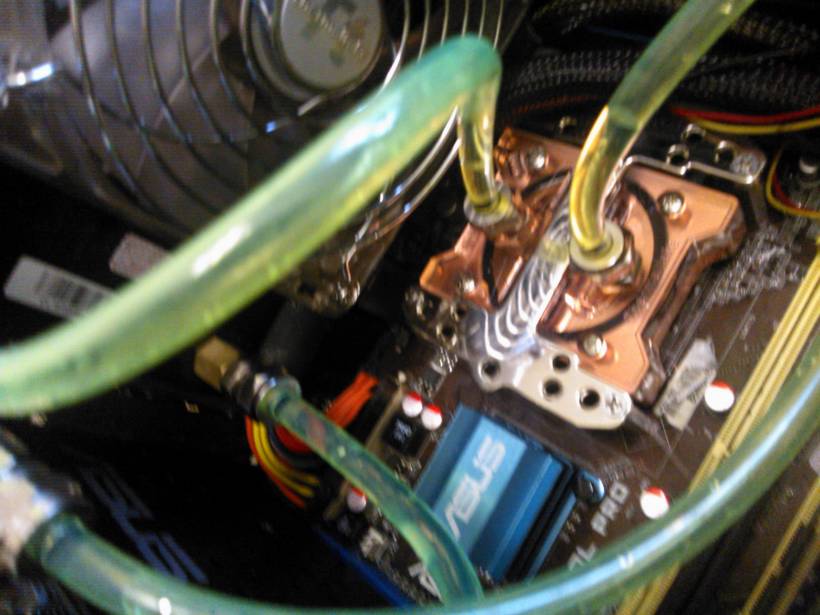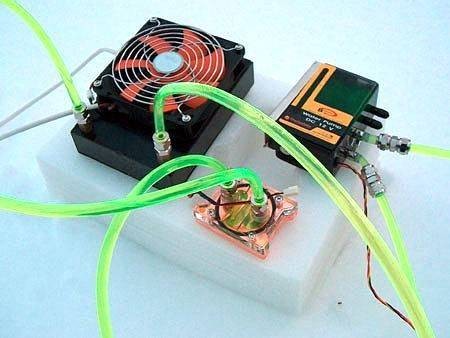Reflecting on my journey with high-performance computing, I fondly recall the robust setup I built in 2013. At its core was the Intel Core 2 Quad Q9550 processor, a powerhouse of its time. Originally clocked at 2.83 GHz, this CPU was renowned for its overclocking potential, and I couldn't resist pushing its boundaries. By adjusting the front-side bus (FSB) and increasing the Vcore, I achieved a stable overclock at 4.2 GHz. Under load, temperatures reached 80°C, while idling settled around 36°C—figures that were acceptable given the performance gains.
Complementing the CPU was the ASUS GeForce GTX 670 DirectCU II TOP graphics card. Released in 2012, this card was celebrated for its efficient cooling and factory overclock. The DirectCU II cooler provided whisper-quiet operation, making it a favorite among gamers and enthusiasts alike. For power, I relied on a reputable 750W power supply unit (PSU) with an 80 Plus Gold efficiency rating, ensuring stable power delivery to all components. To manage the increased heat from overclocking, I initially installed a Thermaltake water cooling system. However, I soon discovered that its small tubing diameter limited its cooling efficiency, leading me to seek better alternatives.
In 2015, disaster struck. One evening, while engrossed in a gaming session, I accidentally knocked over a glass of water, spilling its contents directly onto my rig. The system immediately powered off, and my heart sank. Upon inspection, I found moisture seeping into the motherboard, GPU, and PSU. Despite my best efforts to dry and clean the components, the damage was irreversible. The loss of the ASUS GeForce GTX 670 was particularly disheartening. This card had delivered stellar performance, handling demanding titles with ease and maintaining impressive thermal performance thanks to its DirectCU II cooling solution.
Determined to rebuild, I scoured the secondhand market. I managed to find a P45 chipset motherboard that was compatible with my Q9550 CPU. For graphics, I reverted to my older but still capable GeForce GTX 580. To ensure reliable power delivery, I invested in a new 850W PSU with a Gold efficiency rating, though the brand escapes me now. Learning from my previous cooling challenges, I upgraded to the XSPC RayStorm water cooling kit. This system featured larger tubing, which significantly improved coolant flow and thermal performance. The RayStorm series was well-regarded for its balance of performance and aesthetics, making it a popular choice among enthusiasts.
The new cooling setup proved superior to the Thermaltake system. The larger tubing diameter facilitated better coolant circulation, resulting in more efficient heat dissipation. This upgrade not only enhanced performance but also provided a more stable environment for my overclocked CPU. Reflecting on this experience, I learned valuable lessons about hardware maintenance and the importance of safeguarding against environmental hazards. The incident underscored the need for careful handling of liquids around electronic equipment and the benefits of investing in quality cooling solutions.
In the years since, my rebuilt system has continued to serve me well. The combination of the P45 motherboard, GeForce GTX 580, and the XSPC RayStorm cooling kit has provided reliable performance for both gaming and productivity tasks. This journey has deepened my appreciation for the resilience and upgradability of custom-built PCs. Despite setbacks, with the right components and a bit of perseverance, it's possible to restore and even enhance system performance.
As technology continues to evolve, I remain enthusiastic about future upgrades. The lessons learned from past experiences guide my decisions, ensuring that each build is more robust and efficient than the last.











